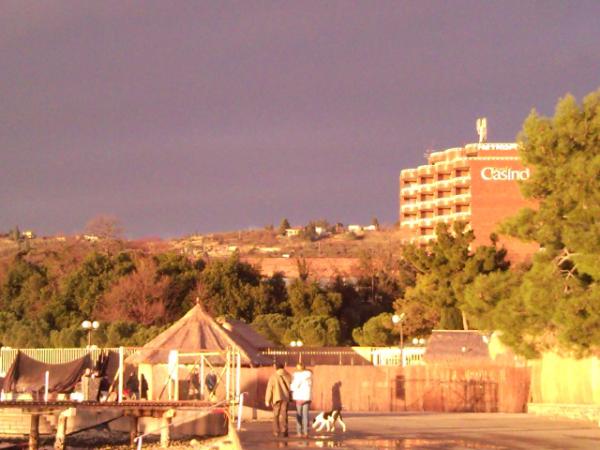na kratko
Definition of: RAID
(Redundant Array of Independent Disks) A disk subsystem that is used to increase performance or provide fault tolerance or both. RAID uses two or more ordinary hard disks and a RAID disk controller. In the past, RAID has also been implemented via software only.
In the late 1980s, the term stood for "redundant array of inexpensive disks," being compared to large, expensive disks at the time. As hard disks became cheaper, the RAID Advisory Board changed "inexpensive" to "independent."
Small and Large
RAID subsystems come in all sizes from desktop units to floor-standing models (see NAS and SAN). Stand-alone units may include large amounts of cache as well as redundant power supplies. Initially used with servers, desktop PCs are increasingly being retrofitted by adding a RAID controller and extra IDE or SCSI disks. Newer motherboards often have RAID controllers.
Disk Striping
RAID improves performance by disk striping, which interleaves bytes or groups of bytes across multiple drives, so more than one disk is reading and writing simultaneously.
Mirroring and Parity
Fault tolerance is achieved by mirroring or parity. Mirroring is 100% duplication of the data on two drives (RAID 1). Parity is used to calculate the data in two drives and store the results on a third (RAID 3 or 5). After a failed drive is replaced, the RAID controller automatically rebuilds the lost data from the other two. RAID systems may have a spare drive (hot spare) ready and waiting to be the replacement for a drive that fails.
The parity calculation is performed in the following manner: a bit from drive 1 is XOR'd with a bit from drive 2, and the result bit is stored on drive 3 (see OR for an explanation of XOR).
RAID Levels
RAID 0 - Speed (Widely Used)
RAID level 0 is disk striping only, which interleaves data across multiple disks for performance. Widely used for gaming, RAID 0 has no safeguards against failure.
RAID 1 - Fault Tolerance (Widely Used)
Uses disk mirroring, which provides 100% duplication of data. Offers highest reliability, but doubles storage cost. RAID 1 is widely used in business applications.
RAID 2 - Speed
Instead of single bytes or groups of bytes (blocks), bits are interleaved (striped) across many disks. The Connection Machine used this technique, but this is rarely used because 39 disks are required.
RAID 3 - Speed and Fault Tolerance
Data are striped across three or more drives. Used to achieve the highest data transfer, because all drives operate in parallel. Using byte level striping, parity bits are stored on separate, dedicated drives.
RAID 4 - Speed and Fault Tolerance
Similar to RAID 3, but uses block level striping. Not often used.
RAID 5 - Speed and Fault Tolerance (Widely Used)
Data are striped across three or more drives for performance, and parity bits are used for fault tolerance. The parity bits from two drives are stored on a third drive and are interspersed with user data. RAID 5 is widely used in servers.
RAID 6 - Speed and Fault Tolerance
Highest reliability because it can recover from a failure of two disks, but not widely used. Similar to RAID 5, but performs two different parity computations or the same computation on overlapping subsets of the data.
RAID 10, RAID 100 - Speed and Fault Tolerance
RAID 10 is RAID 1 + 0. The drives are striped for performance (RAID 0), and all striped drives are duplicated (RAID 1) for fault tolerance.
RAID 100 is RAID 10 + 0. It adds a layer of striping on top of two or more RAID 10 configurations for even more speed.
in kaksni so kej detajli ... k jst bom tud neki mogu nabavt sam ne za to komp
sori @Don vem to majo p. in ji niti ne mislim dat svoj glas pac curka ...
zakaj bi se sploh obremenjeval s zenskami ... toj skoda cajta
college (2008) pa transporter3, camp rock, step brothers dobra roba se splaca pogledat
GIGABYTE grafi?na kartica ATI Radeon HD 4850 HD, 512 DDR3, PCI-E, DVI
kej tazkega?
vse naj naj
joj LabiGT sej bi sam mam tako specialno tipkovnico kjer ne podpira raznih sumnikov in sicnikov ter ostalih lj-jev tko da imam nacrtno na US ... je pa res da me mal zajebavajo tipke (na zalost)







Napisano
mwa mwa mwa 2 all
Povezava za deljenje
Deli na druge strani